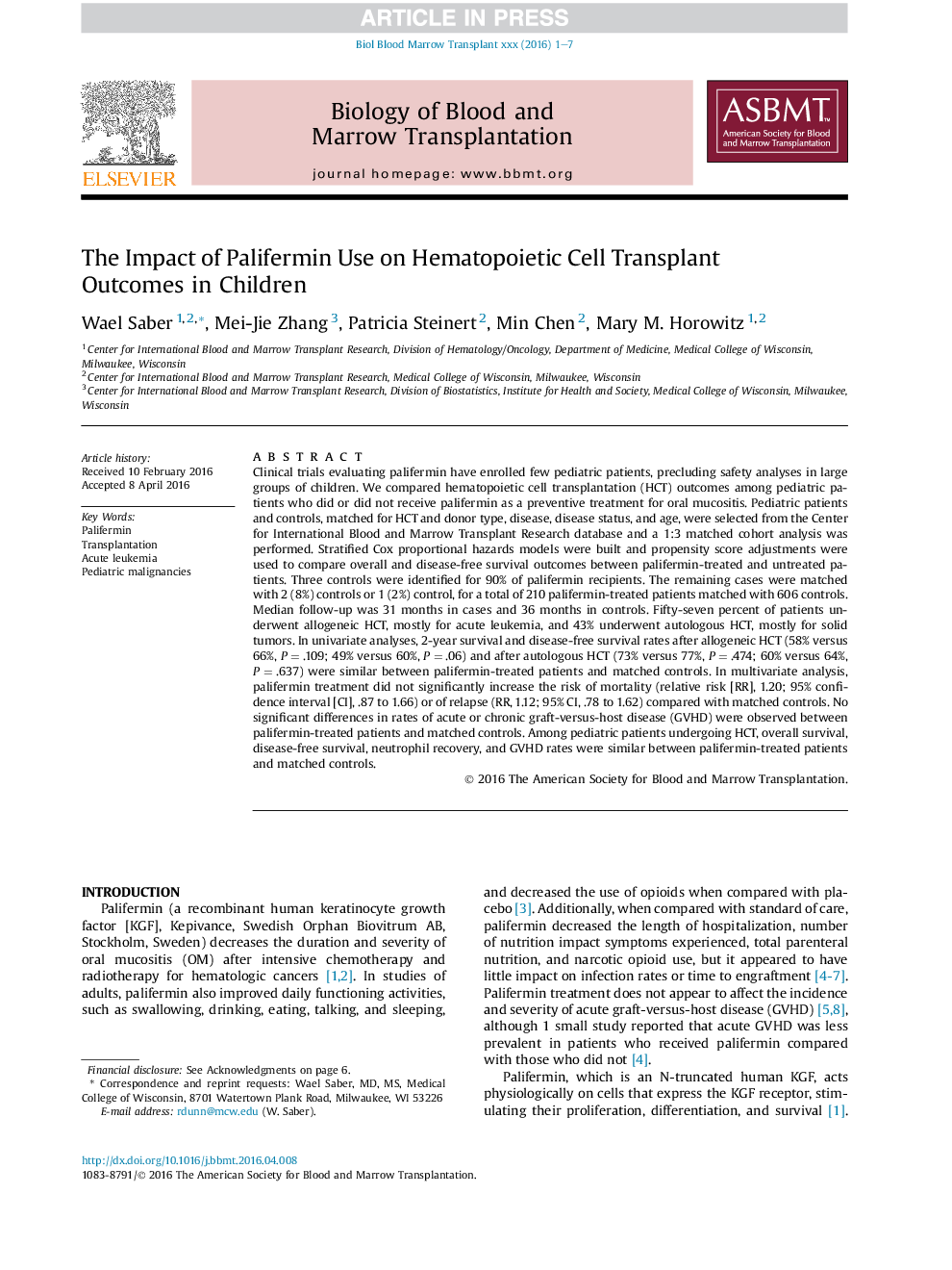| Article ID | Journal | Published Year | Pages | File Type |
|---|---|---|---|---|
| 8430845 | Biology of Blood and Marrow Transplantation | 2016 | 7 Pages |
Abstract
Clinical trials evaluating palifermin have enrolled few pediatric patients, precluding safety analyses in large groups of children. We compared hematopoietic cell transplantation (HCT) outcomes among pediatric patients who did or did not receive palifermin as a preventive treatment for oral mucositis. Pediatric patients and controls, matched for HCT and donor type, disease, disease status, and age, were selected from the Center for International Blood and Marrow Transplant Research database and a 1:3 matched cohort analysis was performed. Stratified Cox proportional hazards models were built and propensity score adjustments were used to compare overall and disease-free survival outcomes between palifermin-treated and untreated patients. Three controls were identified for 90% of palifermin recipients. The remaining cases were matched with 2 (8%) controls or 1 (2%) control, for a total of 210 palifermin-treated patients matched with 606 controls. Median follow-up was 31Â months in cases and 36Â months in controls. Fifty-seven percent of patients underwent allogeneic HCT, mostly for acute leukemia, and 43% underwent autologous HCT, mostly for solid tumors. In univariate analyses, 2-year survival and disease-free survival rates after allogeneic HCT (58% versus 66%, PÂ =Â .109; 49% versus 60%, PÂ =Â .06) and after autologous HCT (73% versus 77%, PÂ =Â .474; 60% versus 64%, PÂ =Â .637) were similar between palifermin-treated patients and matched controls. In multivariate analysis, palifermin treatment did not significantly increase the risk of mortality (relative risk [RR], 1.20; 95% confidence interval [CI], .87 to 1.66) or of relapse (RR, 1.12; 95% CI, .78 to 1.62) compared with matched controls. No significant differences in rates of acute or chronic graft-versus-host disease (GVHD) were observed between palifermin-treated patients and matched controls. Among pediatric patients undergoing HCT, overall survival, disease-free survival, neutrophil recovery, and GVHD rates were similar between palifermin-treated patients and matched controls.
Related Topics
Life Sciences
Biochemistry, Genetics and Molecular Biology
Cancer Research
Authors
Wael Saber, Mei-Jie Zhang, Patricia Steinert, Min Chen, Mary M. Horowitz,
